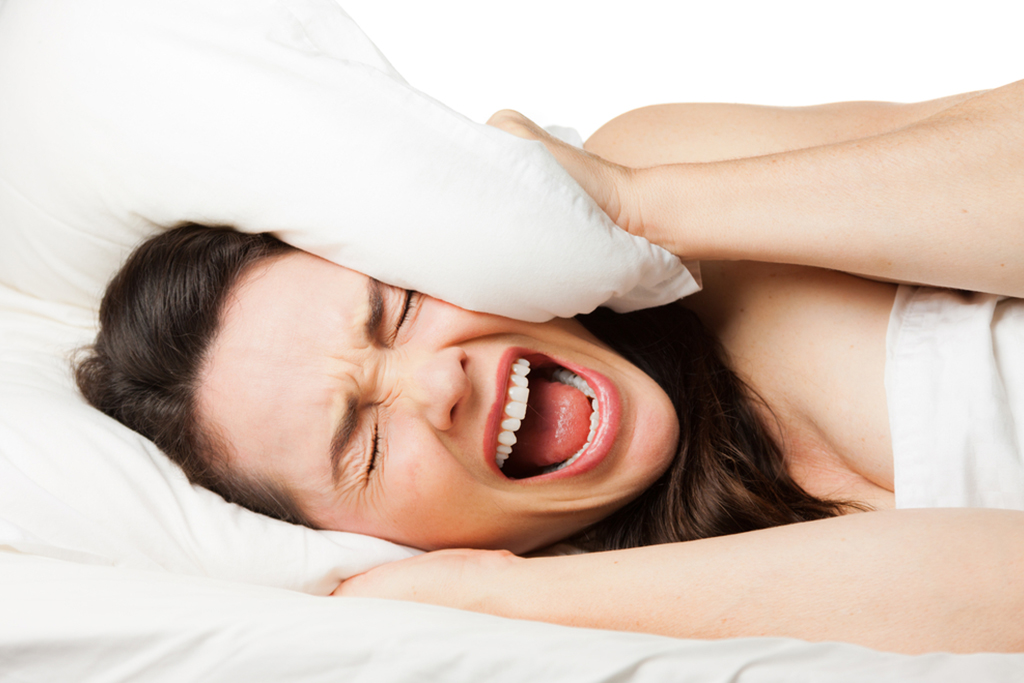Pillow Headaches. Yes, a bad pillow can cause headaches by adding tension to the suboccipital neck muscles, resulting in morning headaches. It’s vital to choose a pillow that keeps your neck aligned and supports ideal sleep positions to avoid potential alignment issues and sleep-related headaches.
Additionally, using a pillow designed for specific sleep positions can alleviate discomfort and relieve potential headache triggers. Waking up with headaches, a sore neck, or struggling to breathe, could signal the need for a new pillow, as pillows that have changed shape, contain visible stains, or cause tossing and turning at night may contribute to headache symptoms.
Opt for a pillow that offers proper support and alignment to prevent sleep-related headaches and discomfort.
Pillow Headaches:

Causes Of Pillow Headaches
Headaches can be caused by a variety of factors, including stress, dehydration, and even poor sleeping posture. However, one surprising cause that often goes overlooked is the quality and condition of your pillow. A bad pillow can contribute to headaches by not providing the proper support and alignment for your head and neck. In this section, we will explore the specific causes of pillow headaches, including improper pillow support, incorrect pillow height, and old or worn-out pillows.
Improper Pillow Support
One of the main causes of pillow headaches is improper support. When your pillow doesn’t adequately support your head and neck, it can lead to misalignment, causing strain on the muscles and joints in your upper body. This strain can result in tension headaches, which are often characterized by a dull, aching pain that radiates from the neck to the forehead.
To ensure proper support, it is important to choose a pillow that matches the natural curvature of your neck and promotes proper alignment. Pillows that are too firm or too soft may not provide the necessary support, leading to headaches and discomfort. Finding the right balance between softness and firmness is key to prevent pillow headaches.
Incorrect Pillow Height
The height of your pillow can also be a significant factor in causing headaches. If your pillow is too high, it can force your head and neck to be in an elevated position, resulting in added tension on the suboccipital neck muscles. This excessive tension can lead to headaches upon waking up or even develop throughout the day.
On the other hand, a pillow that is too low can cause your head to sink at an awkward angle, straining the muscles and putting unnecessary pressure on your neck and shoulders. This misalignment can trigger headaches and discomfort.
Old Or Worn-out Pillow
Another common cause of pillow headaches is using an old or worn-out pillow. Over time, pillows can lose their shape, support, and cushioning, making them ineffective in providing proper alignment and comfort. Sleeping on a flat, lumpy, or sagging pillow can lead to poor neck support and strained muscles, resulting in tension headaches.
To avoid headaches caused by a worn-out pillow, it is recommended to replace your pillow every 1-2 years or when it starts to show signs of wear and tear. Investing in a high-quality, supportive pillow can make a significant difference in preventing pillow headaches.
Overall, understanding the causes of pillow headaches is essential for finding solutions and ensuring a good night’s sleep. By addressing issues such as improper pillow support, incorrect pillow height, and old or worn-out pillows, you can minimize the risk of headaches and wake up feeling refreshed and pain-free.

Symptoms Of Pillow Headaches
Morning headaches can be a common symptom of using a bad pillow. Having the wrong pillow can cause significant strain on your neck and head as you sleep, leading to headaches upon waking. The discomfort and pain caused by a bad pillow can make it difficult to start your day feeling refreshed and free from headaches.
Morning Headaches
Waking up with a headache can be a sign that your pillow is not providing adequate support. This symptom can be especially prevalent if your pillow is too high or too stiff, causing tension in the suboccipital neck muscles and leading to headaches as you begin your day.
Neck And Shoulder Pain
Using a bad pillow can also result in neck and shoulder pain. Incorrect pillow support can cause your neck to be misaligned, leading to stiffness and discomfort in the neck and shoulders. This can contribute to the development of headaches and impact your overall comfort during sleep.
Discomfort And Stiffness
If you frequently experience discomfort and stiffness, especially in the mornings or while trying to sleep, it can be a sign that your pillow is not providing the necessary support. These symptoms of discomfort and stiffness can result in headaches and impact your overall sleep quality, leaving you feeling fatigued and sore upon waking.
Choosing The Right Pillow
Choosing the right pillow is crucial in preventing headaches and ensuring a restful night’s sleep. With a vast array of options available, it’s important to consider various factors to find the perfect pillow for your individual needs. From sleep position to pillow material, each aspect plays a significant role in alleviating the risk of headaches caused by poor pillow choice.
Consider Your Sleep Position
When selecting a pillow, it’s essential to consider your sleep position. Side sleepers may require a firmer and higher pillow to maintain proper neck alignment, while back sleepers might benefit from a medium-height pillow to support the natural curvature of the spine. Stomach sleepers typically need a softer, thinner pillow to prevent neck strain.
Optimal Pillow Height
The optimal pillow height varies depending on your sleep position. For side sleepers, a pillow with a higher loft provides adequate support and aligns the head with the spine. Back sleepers often find comfort with medium-height pillows, while stomach sleepers benefit from a low-loft pillow to prevent unnecessary strain on the neck.
Choosing The Right Material
The material of the pillow also plays a vital role in headache prevention. Memory foam pillows conform to the shape of the head and neck, providing excellent support and pressure relief. Those allergic to traditional pillow materials may opt for hypoallergenic options, such as latex or buckwheat pillows, to avoid potential allergic triggers.

Preventing Pillow Headaches
Using the wrong pillow can contribute to headaches. If a pillow is too high, it can cause tension in the neck muscles and result in morning headaches. It’s important to choose a pillow that provides proper support and aligns the neck with the rest of the spine to prevent pillow headaches.
Maintaining Proper Pillow Care
Proper pillow care is essential in preventing headaches. Regularly fluffing and shaking your pillow will help maintain its shape and support. Ensure that you follow the manufacturer’s instructions for cleaning your pillow. Dust mites and allergens can build up over time, leading to nasal congestion and headaches. Washing your pillow regularly and using hypoallergenic pillow covers can greatly reduce these triggers.
Sleeping In The Correct Position
The position you sleep in can greatly affect the occurrence of headaches. Sleeping on your back with proper neck and head alignment is the ideal position. Choose a pillow that keeps your neck aligned with the rest of your spine. Side sleepers should opt for a pillow that provides adequate support to prevent neck strain. Avoid sleeping on your stomach, as this can strain your neck and lead to tension headaches.
Regularly Replacing Your Pillow
Regularly replacing your pillow is vital for preventing headaches. Over time, pillows lose their shape and support, which can lead to improper alignment of your head and neck. If your pillow has visibly changed shape, it’s time for a new one. Additionally, if you frequently wake up with sore neck or shoulders, or if you find yourself tossing and turning at night, it may be a sign that your pillow needs to be replaced.
Other Remedies For Headaches
If you’re experiencing headaches and suspect that your pillow may be the culprit, it’s important to address the issue and find a solution that works for you. However, changing your pillow isn’t the only remedy for headaches. There are other techniques and professional medical advice that can provide relief from headaches.
Headache Relief Techniques
When it comes to relieving headaches, there are several techniques that you can try:
- Relaxation exercises: Deep breathing exercises, meditation, and yoga can help reduce tension and promote relaxation, potentially relieving headaches.
- Hot or cold compress: Apply a hot or cold compress to your head or neck to alleviate pain and reduce inflammation.
- Massage therapy: Gentle massaging of the head, neck, and shoulders can help relieve muscle tension that may be contributing to headaches.
- Aromatherapy: Certain essential oils, such as lavender or peppermint, can be used in aromatherapy to help reduce headache symptoms.
Professional Medical Advice
If your headaches persist despite trying various remedies, it’s important to seek professional medical advice. A healthcare professional, such as a doctor or a neurologist, can evaluate your symptoms, perform necessary tests, and provide appropriate treatment options. Depending on the underlying cause of your headaches, these may include:
- Medications: Your doctor may prescribe pain relievers, muscle relaxants, or preventive medications to manage your headaches.
- Physical therapy: A physical therapist can help you with exercises and techniques to improve posture, reduce muscle tension, and alleviate headaches.
- Acupuncture: This traditional Chinese medicine technique involves inserting thin needles into specific points of the body to help relieve pain, including headaches.
- Cognitive-behavioral therapy: If your headaches are related to stress or anxiety, a therapist can help you identify triggers and develop coping strategies through cognitive-behavioral therapy.
Remember, finding the right remedy for your headaches may require some trial and error. It’s important to be patient and persistent in your search for relief. With the help of these techniques and professional medical advice, you can take control of your headaches and improve your overall quality of life.
Conclusion
If you frequently wake up with headaches, it may be worth considering whether your pillow is to blame. Pillows that are too high or too soft can cause misalignment of the head and neck, putting strain on the muscles and leading to headaches.
Look out for signs such as changes in shape, visible stains or odors, and waking up with a sore neck or shoulders. To prevent pillow-related headaches, choose a pillow that keeps your neck aligned with your spine and consider sleeping on your side for optimal neck alignment.

